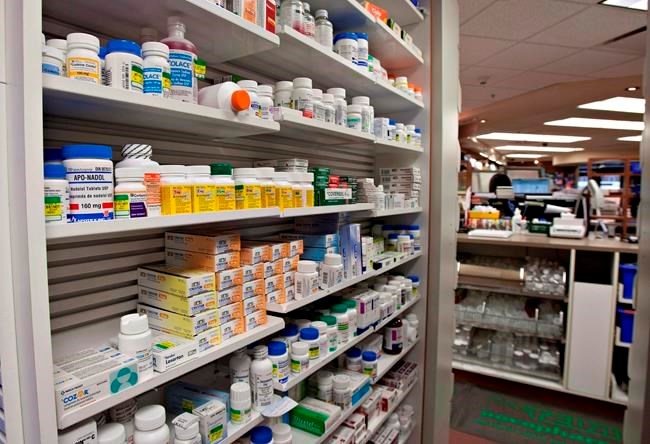OTTAWA — Ongoing drug shortages are leaving pharmacies across the country to adjust to short shipments on the fly, according to the Canadian Pharmacists Association.
The association first warned of the possibility of shortages in early March, when supply chains for ingredients and finished medications were disrupted by COVID-19 in China.
While Canada has seen a spike in shortages since then, it hasn't developed into the emergency situation some health officials had feared.
"(Pharmacists) are managing their inventory as best they can with the product that they're getting, and nobody is going without medication," said association spokesperson Barry Power.
That sometimes means finding substitute medications when the top choice is running low, he said.
Drug shortages are not new in Canada, but the pandemic has put added stress on pharmacies. Last year, the association said manufacturers reported about five new drug shortages per day in Canada. That increased to 16 a day by early April.
Meanwhile Health Canada has identified 27 drug shortages that could have a serious impact on the health system, typically because there are few good alternatives for those particular medications. Most of the drugs listed are used in the treatment of COVID-19, such as sedatives, painkillers and drugs being investigated as treatments for the viral disease.
Pharmacists have also reported shortages of certain over-the-counter medications like Pepcid, Power said. An intravenous form of the heartburn medication is being researched as a potential COVID-19 treatment. Another reason for its sudden popularity could be a recent recall of competitor medication Zantac, which might have people reaching for an alternative, he said.
The fact that everyone is still getting some form of the medication they need is likely an indication that drug-rationing measures are working, Power said.
In March the association recommended pharmacies restrict the amount of drugs they dispense to a 30-day supply per patient.
"It's cut back on the demand for things. So I think there has been definitely a positive impact on making sure that people are still able to get their medications. Maybe not the quantities they want, but they are able to get it," Power said.
The main drawback is that some patients have had to pay more frequent dispensing fees.
"I'm going to have to decide between test strips and food," said Siva Swaminathan, a Type 1 diabetic who lives in Toronto.
Managing her condition means taking several medications, and replenishing her supply of needles, test strips and pump supplies.
She lost her income during the epidemic, and now has to pay three times the dispensing fees as usual. That's left her out of pocket an extra $110 so far.
"It's really, really expensive to buy the drugs individually without the province stepping in," she said.
Several provinces have changed the way they provide co-payments to compensate for the added costs, but others like Ontario have not.
Meanwhile British Columbia and New Brunswick have started to return to dispensing 90-day supplies, Power said.
As China reopens its economy, the flow of drugs along the supply chain is improving. But it's not back to normal yet, he warned, and that's why the association has not lifted the recommendation to limit dispensing.
"We don't know what's going to happen if everybody goes back to a 90-day supply," he said. "There's still a lot of vulnerability in the supply chain."
Power says the association is working with Health Canada, drug manufacturers and wholesalers to decide when those restrictions should be lifted.
This report by The Canadian Press was first published May 6, 2020.
Laura Osman, The Canadian Press
